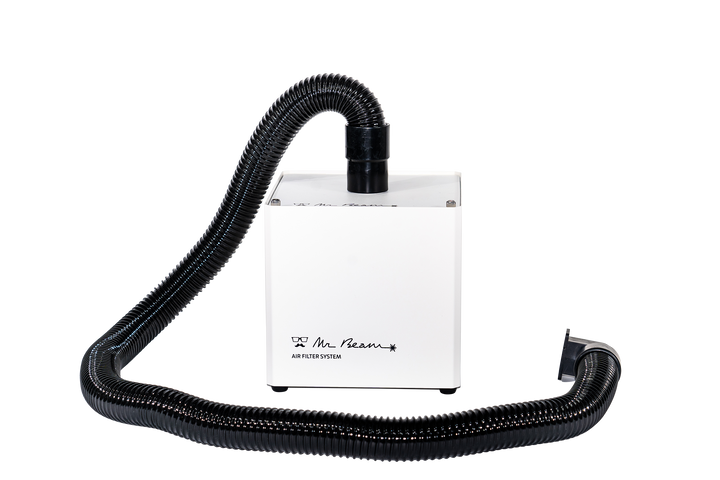Possible dangers assume a laser beam. To avoid injuries, it is therefore important to know what hidden behind each individual laser class. Read here which classes are available and how they differ.
How many laser classes are there?
Laser systems produce highly concentrated light rays and apply them in a wide range of applications. With many lasers, the performance is so high that serious injuries are possible with improper use. Therefore, there are strict guidelines that divide the laser systems into grades 1 to 4 according to the risk level. There are also additional subclasses. They range from harmless to heavily damaging for the eyes and skin.
Which laser classes are there?
There are classes 1 to 4. With every laser class, the danger of the laser for the user increases:
What does laser class 1 mean?

The laser in class 1 means harmless and eye -safe for the user. Health damage from proper operation can be excluded. This applies if the conditions are predictable and the use is properly. The laser, which is radiated on the outside, with which users come into contact with a few microwatts, is so low that even longer radiation cannot cause any damage. In the Area of class 1 laser products, for example, fall:
- Laser labelling devices (with protective housing)
- Laser pointer (approved)
- secure laser cutter suitable for private users
Class 1 laser often players, for example a CD player.
Laser class 1 m is very similar to a lower class 1 laser, because it is considered safe for the eyes. The difference is as follows: If you look at the enlarged beam through an optical instrument, such as binoculars or a magnifying glass, it can be focused and damage. The Lasers in class 1 m include:
- Laser diodes
- Laser speed meter
- Barcodeleser, for example at supermarket coffers
What does laser class 2 mean?
In class 2 lasers, the laser light is with an accessible radiation of 400 to 700 Nm (visible light). With a short exposure period, which is less than 0.25 seconds, there is no danger for the eyes. The 0.25 seconds were chosen because the time corresponds exactly to the eyelid reflex, i.e. the time that the eye needs to close. Under these conditions are no additional protective devices or measures necessary. This means that laser class 2 is generally only possible in the visible spectrum. If you cannot see the ray, the eye cannot close reflexively either. In the area of class 2, among other things:
- Strong laser pointer
- Light barrier
- Laser removal meter
Class laser 2 m
In the laser class 2 m There are also damage if you look briefly into the beam. The exposure time should not exceed 0.25 seconds. However, these lasers are mostly installed in devices so that they do not hit the eyes. Laser in class 2 m is usually also considered safe if no optical instruments such as magnifying glasses are used. Find class 2 m lasers, for example:
- Projection laser
What does laser class 3 mean?
Class 3r is in terms of damage to the eyes between the safe laser class 2 and the 3b, which is classified as dangerous. A real damage risk it results in the direct view of the beam and if the radiation takes several seconds. This class is used: among other things:
- Level laser
- Laser scanner
Laser class 3b
Laser in this class can be dangerous. Eye damage is possible if you look into the beam. That The same applies to a reflective reflection. Here you have to wear special safety glasses. At a non -reflective meeting point, eye damage must be excluded. The accessible laser radiation in class 3b can also be dangerous for the skin in the form of smaller burns. The following use is possible:
- Show laser, that is, entertainment shows with light
- Cosmetic laser
What does laser class 4 mean?
All lasers that do not correspond to the conditions of the laser classes already mentioned or can be secured by corresponding protective housings fall into class 4. These rays can damage the eyes and skin, so that the utmost caution applies. Fires and explosions are possible. The radius of risk can be a few hundred meters. Special protective precautions such as access controls are indispensable here. Diffuse reflections are still dangerous. These lasers only serve professionals. In addition, laser protection officers are present and fire protection and explosion protection measures are taken in advance. Class 4 is used for high -performance lasers in the areas of the materials and surface processing, similar to that of classes 3R and 3b. Under laser class 4, industrial devices, where there is no chance of locking the laser, are particularly important because the objects are much larger than, for example, the room. Usage are:
- Laser cutting of large objects
- Laser welding
Mr Beam Laser cutter belongs to laser class 1

Of the Mr Beam Laser cutter, the one CE marking has the EU guidelines in relation to security, health and environmental protection. He's with classified its protective devices in laser class 1, is therefore considered to be eye-safe for the user. However, it is a powerful device with which you can cut and engrave different materials. Thanks to various measures, use is possible without a laser protection officer. You can also do that laser use at home.
Conclusion on the laser classes
Lasers are not harmless to the eyes, skin, fire and explosion. Laser devices are therefore divided into different laser classes. This makes it easier to assess the hazards for the user. Except for the harmless laser class 1, you should have training and appropriate protective equipment when operating. For eyes, for example, safety glasses and a special suit to protect the skin. The general rule:. With increasing class, the risk increases - The laser class says nothing about the performance of the laser. Classes 3b are considered dangerous even in the event of a short exposure time, and especially class 4. The latter requires separate ones when operating Safety measures. Caution: If a laser device has a column or holes in the protective housing, it is dangerous - even if class 1 is wrong.




